AS coordinator of the Grains Research and Development Corporation’s (GRDC) national Grain Storage Project, Chris Warrick is often asked “what’s the cheapest form of on-farm grain storage?”
While it sounds like a simple enough question, answering it adequately requires Mr Warrick to reply with a few questions of his own about the business’s production, marketing and operational structure.
“It’s important to differentiate between cheap and good value when it comes to grain storage and there’s more to it than a pure dollar figure,” Mr Warrick said.
When weighing up grain storage options, some important considerations include:
What type grain is being stored?
- How long is the grain going to be stored? Will the storage be short term only as means of managing harvest logistics? Or will the grain be held for longer requiring the prevention and management of pest incursions through hygiene, aeration cooling and correct fumigation?
- What’s the labour structure of the business? Is there labour stress at harvest time or is there generally adequate labour capacity during the harvest period?
- What are the key personality traits of those who will be involved in managing the on-farm storage system? Do they tend to be diligent on routine operational tasks?
“Considering the requirements and nature of the business, and the people involved within it, is key to ensuring that any investment in a grain storage system represents value for money,” Mr Warrick said.
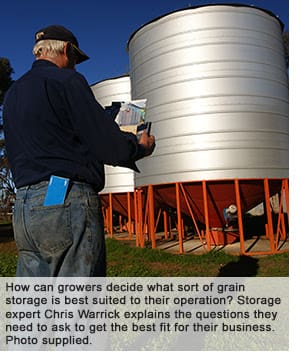 “For example, if storage is only going to be required as a short term measure and the business doesn’t experience labour stress at harvest time, bags and bunkers may be a viable option.
“For example, if storage is only going to be required as a short term measure and the business doesn’t experience labour stress at harvest time, bags and bunkers may be a viable option.
“However, in instances where there’s no excess labour at harvest and flexibility is required for longer term storage, a better option might be gas-tight, sealable silos with aeration cooling which will allow for grain quality preservation and insect control.
“If growers opt to go down that path, their next decision centres on which silo brand to choose – generally you get what you pay for with grain storage but where the inherent value lies is in designing the whole system well, implementing a best-practice integrated pest management and monitoring program and adhering to hygiene recommendations.”
Is grain storage worth the investment?
On-farm storage capacity has doubled over the past 10 years with growers now able to store 41 per cent of their production capacity on average.
This expansion is likely to continue as growers strive to maximise the quality, marketability and value of their grain.
While storage systems can deliver long-term cost benefits, it’s important to recognise that they require significant infrastructure investment and can add complexity across the supply chain.
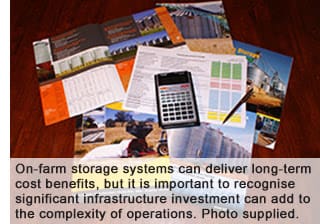 Mr Warrick said on-farm storage generally required multiple financial benefits to cover costs and urged growers to analyse the costs and expected returns, weigh up all options and make informed decisions.
Mr Warrick said on-farm storage generally required multiple financial benefits to cover costs and urged growers to analyse the costs and expected returns, weigh up all options and make informed decisions.
“Like many economic comparisons in farming, the viability of grain storage is different for each grower,” he said.
“Depending on the business’s operating style, the location, the resources and the most limiting factor to increase profit, grain storage may or may not be the next best investment.
“Therefore, everyone needs to do a simple cost benefit analysis for their own operation.
“To make a sound financial decision, it’s important to compare the expected returns from grain storage versus expected returns from other farm business investments, such as more land, a chaser bin, a wider boomspray, a second truck or paying off debt.
“The other comparison is to determine whether grain can be stored on-farm cheaper than paying a bulk handler to store it.”
Calculating the costs and benefits
To enable a simple comparison, Mr Warrick suggested calculating the benefits and costs on a dollars per tonne basis.
He said the majority of growers would require multiple financial gains in areas such as harvest logistics, timeliness, market premiums, freight savings, cleaning, blending or drying grain to add value, in order to make a return out of on-farm storage.
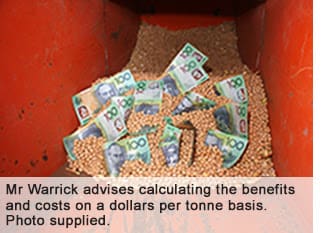 On the flip-side, grain storage costs can be broken down into fixed and variable. Fixed costs are those that don’t change from year to year and have to be covered over the life of the storage such as depreciation and the opportunity or interest cost on the capital.
On the flip-side, grain storage costs can be broken down into fixed and variable. Fixed costs are those that don’t change from year to year and have to be covered over the life of the storage such as depreciation and the opportunity or interest cost on the capital.
Variable costs are all those that vary with the amount of grain stored and the length of time it’s stored for.
“Interestingly, the costs of good hygiene, aeration cooling and monitoring are relatively low compared to the potential impact they can have on maintaining grain quality,” Mr Warrick said.
“One of the most significant variable costs, and one that is often overlooked, is the opportunity cost of the stored grain.
“That is, the cost of having grain in storage rather than having the money in the bank paying off an overdraft or term loan.”
Making an informed decision
While acknowledging it’s difficult to place an exact figure on each of the costs and benefits, Mr Warrick said a calculated estimate would determine if an option was worth investigating more thoroughly or discounting completely.
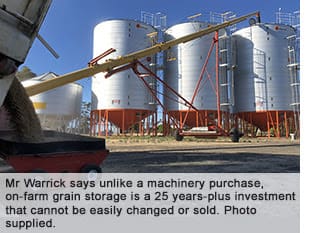 “Unlike a machinery purchase, on-farm grain storage is a 25 years-plus investment that cannot be easily changed or sold,” Mr Warrick said.
“Unlike a machinery purchase, on-farm grain storage is a 25 years-plus investment that cannot be easily changed or sold,” Mr Warrick said.
“Based on what the grain storage extension team is seeing around Australia, growers who are taking a planned approach to on-farm grain storage and doing it well are being rewarded for it.
“Grain buyers are seeking out growers who have a well-designed storage system that can deliver insect free, quality grain without delay.”
Source: GRDC

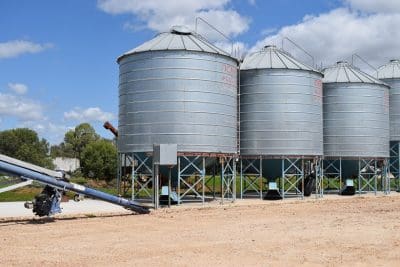


HAVE YOUR SAY